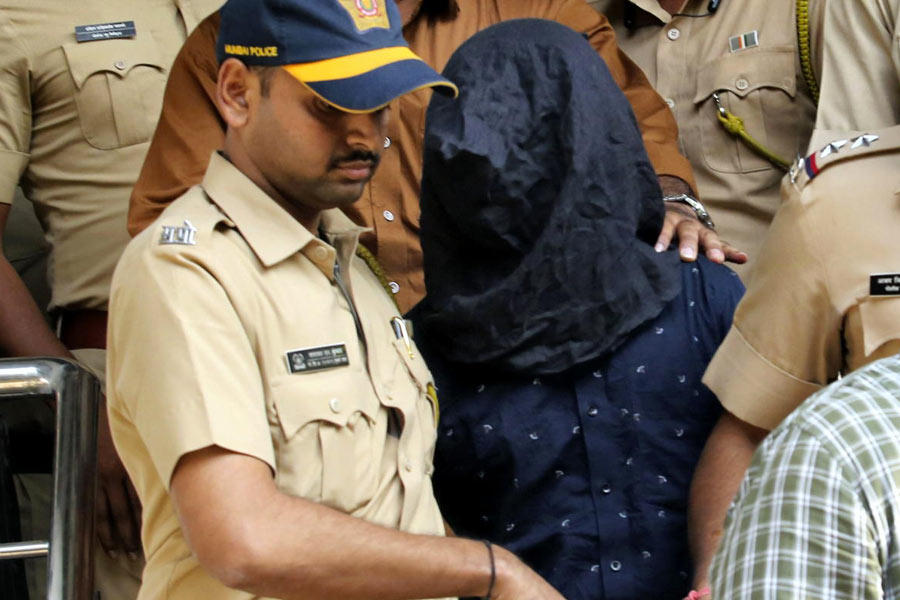|
|
Cricket’s evolution sped up in the 21st century. Till the 1999 World Cup, Test cricket was the dinosaur and the one-day international was the coming thing. This bloom faded more quickly than anyone anticipated: cricketers and commentators began to fret about the tedium of the middle overs in limited-overs contests and criticize the predictability of a game that had only come to maturity in the 1990s. Fielding circles were introduced in the 1983 World Cup, coloured clothing in the 1992 tournament, and yet, by the end of the millennium, cricket’s rule-makers were experimenting furiously to enliven a ‘stale’ format.
There was, for example, the blithe introduction of the ‘super sub’; this didn’t last but the hideously named Power Plays did and were periodically tweaked to make ODIs even more batsman-friendly than they already were. But despite these anti-bowler ‘improvements’ (the worst of which is the free hit penalty for a no ball) pundits are still talking about the imminent death of the ODI. The reason for this pessimism is obvious: the Twenty20 game, especially its Indian Premier League avatar, has created a big business model that makes the two longer forms of cricket look like financially irrelevant cottage industries.
Once upon a time, being dropped from a World Cup squad would have meant disappointment, obscurity, the loss of lucrative national contracts and the probable loss of income from endorsements. But Irfan Pathan, dropped from every form of international cricket, still makes nearly two million dollars a year for less than two months work. The newest, shortest format of the game offers players undreamt of wealth, sells tens of thousands of tickets, and gives corporations and film stars not just the promise of a return on investment but branding opportunities and extraordinary visibility. This three-hour tamasha is so young that its impact on the economics of Test cricket and the ODI is yet to be gauged, but pundits have begun to foretell the future.
The conventional wisdom till recently has been that the shortest and longest formats will survive but the one in the middle, the one that underwrites this World Cup, will become obsolete. The reasoning is that Tests and Twenty20 matches are so dissimilar that they aren’t competing for the same audience, whereas the ODI is doomed because it is too long to attract the new family audience that Twenty20 has created and too short to interest the traditional spectator.
As a result, former and current players like Chris Cairns and Sachin Tendulkar have begun to recommend radical surgery for the 50-over format to save it from extinction. They want to turn it into a four- innings game, each 20 overs long. They want to meld the come-from-behind excitement of Test cricket with the urgency of the 20-over format. The problem with the prescription is that it’s being offered to the wrong patient. It’s not the ODI that’s threatened with extinction; it’s Test cricket.
The notion that the ODI was endangered was always unsubstantiated. ODIs consistently draw full houses in India where the revenue-generating audience for world cricket lives. It’s Test matches that play to empty stadiums. Advertisers would much rather air commercials on television during ODIs because there are so many more eyeballs watching the limited-overs game. Doordarshan, the national telecaster, which has the right to televise all cricket featuring India in India, will sometimes not air Test series but it always telecasts ODIs.
Apart from economics, the other advantage that the ODI has in a world dominated by Twenty20 cricket is that the skill sets needed for both limited-overs formats are roughly the same so the ecology that sustains the Twenty20 game will comfortably support its close cousin. If the IPL becomes the most important ‘domestic’ competition in India’s cricket calendar, ambitious young cricketers will mould their techniques to succeed within this format. This won’t damage the 50-over format, but it will play havoc with the supply lines of Test cricket.
The nursery for the long game everywhere is three-day first-class cricket. Why would an ambitious young buck bother with the glamour-free grind of the first class game when the riches of the IPL beckon? The death of Test cricket in India won’t be spectacular. It’ll be preceded by the death of first-class cricket which itself will die gradually, of disorganization and disinterest. Till the advent of the IPL, the Ranji Trophy had managed to become stably derelict without actually dying. It lived a kind of half-life because it was the route to an international debut with its attendant glory and riches.
Now that those riches are available without winning a cap (this year the IPL announced that it will allow uncapped Indian players to be auctioned in future editions), there’s no incentive of any sort to play first-class cricket. As cricketing and administrative talent gravitates towards IPL’s franchises, the collapse of the Ranji Trophy becomes a matter of time. Already every school- and college-level cricket tournament in India is played by limited-overs rules. Once India’s solitary four-innings domestic tournament dies, so will Test cricket because you can’t select Test cricketers on the strength of their showing in the limited-overs competition. When you do, you get players like Suresh Raina.
The point of cricket is no longer the challenge of representing your state or province or country in a contest. Counties, provinces, states and tournaments based on these territorial divisions still exist, but the IPL, molten with money, will make these competitions seem like charades. The IPL gestures at the territorial principle by incorporating place names in team names — the Delhi Daredevils or the Mumbai Indians — but the Mumbai Indians have about as much to do with Mumbai as Chelsea does with London. Franchised cricket, with its seasonally mobile players, has made the idea of territorial affiliation a marketing ploy rather than a genuinely felt identity.
But can’t the example of football be used to argue that territorial sport at the national level and professional clubs at the league level can coexist? The football World Cup is wildly successful, with an audience larger than that of any other sporting event despite the fact that football is organized in leagues. Why can’t that happen in cricket? Why can’t Test cricket and the IPL coexist?
For a simple reason: league football and international football are exactly the same game; Twenty20 cricket and Test cricket aren’t. A compact, lucrative sport won’t make allowances for a drawn-out, calendar-hogging one. The long, bilateral Test series is the natural enemy of a franchised tournament that wants all its contracted players available, so they can earn their salaries.
Premier league managers like Arsène Wenger and Sir Alex Ferguson complain bitterly when their stars are called up for national duty. In football, this happens relatively rarely; given the nature of a Test series, in cricket this will happen all the time. And it won’t be tolerated. Already, there’s talk of a second season for the IPL, and it’s inevitable that its organizers and sponsors will try to colonize more of the calendar given its astounding success. League football shows us that it’s in the nature of profitable professional sport to push for longer seasons.
Test cricket might yet be salvaged if cricket’s administrators acknowledge the threat and the challenge that Twenty20 cricket poses. Test cricket has to cut its losses and shrink. England, Australia, India, Sri Lanka and South Africa ought to play competitive series against each other and the weaker sides should be relegated to a lower tier of cricket. Lop-sided matches damage the long game’s credibility — that’s a luxury Test cricket can’t afford. Besides, uncompetitive Tests use up precious time that the IPL will soon be coveting. Triage is always unpleasant but it might save Test cricket; living in denial will almost certainly kill it.
So why do so many grey eminences and Test immortals in Indian cricket continue to parrot Haroon Lorgat’s soothing mantra that all three forms of the game can muddle along, or peddle the even dafter notion that the IPL threatens ODIs more than it does Tests? It can’t be bad faith because they’re honourable men and care about their legacy as Test cricketers. I suspect one reason is that nearly all of them have found opportunities in the great IPL bonanza and would rather not believe that the monster they’re nurturing will consume the game that made them famous. The other likely reason is that any re-shaping of Test cricket will mean so much conflict and unpleasantness that it’s much easier to go along and hope that the conflict will resolve itself.
But it won’t. Instead a time will come (and soon) when Test cricket will return to its original condition: it will revert to being a bilateral contest between England and Australia, the only two countries with boards and fans that care about the long game. In the subcontinent, Twenty20 cricket will rule: for Indian fans, the long game will come to mean the 50-over ODI.












